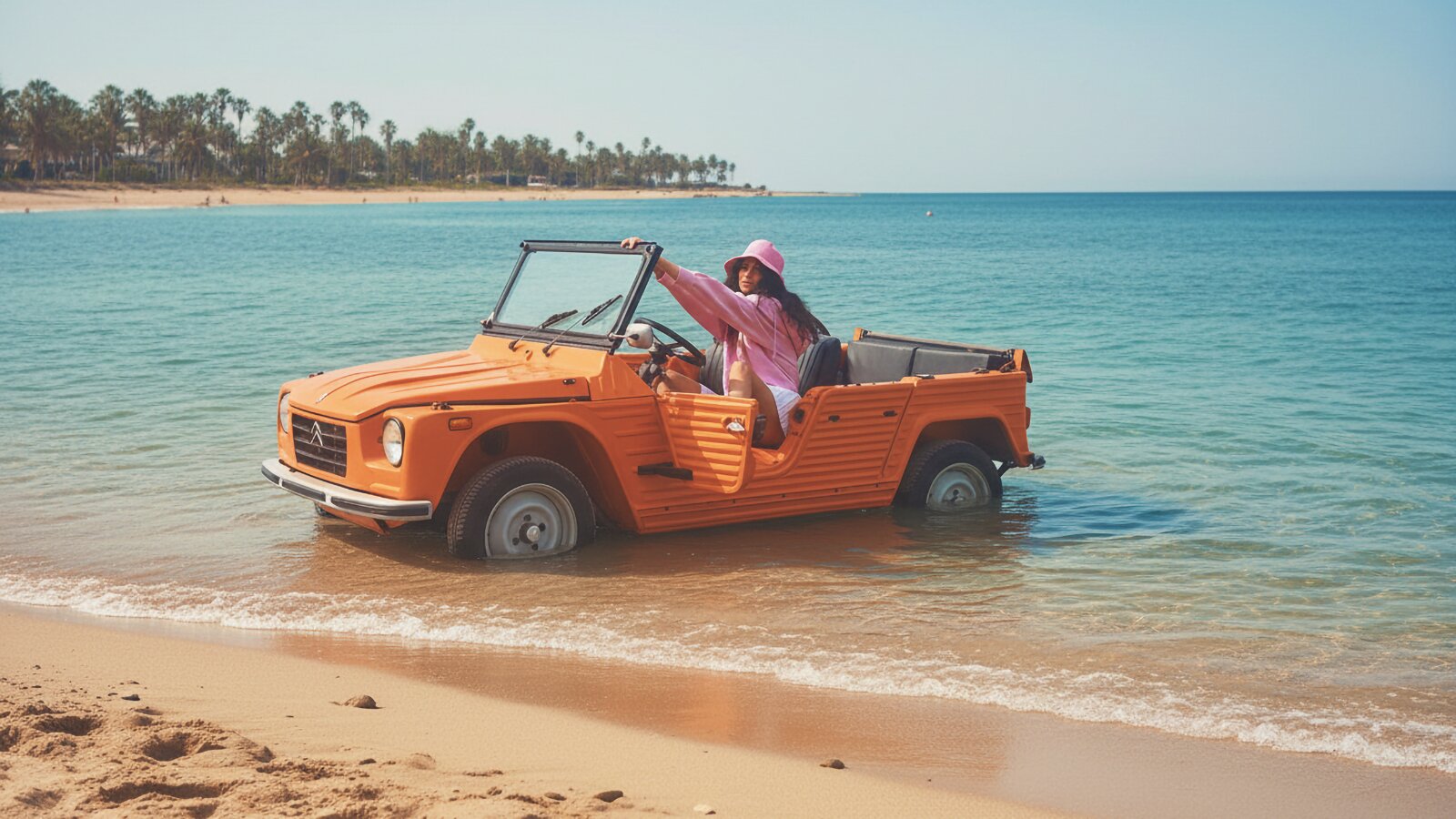The first test was sobering, as expected. Google flags anything that even remotely resembles skin. Even a fully clothed 25-year-old who simply gazes too seductively into the camera immediately triggers the "Content blocked" output. As a nude photographer, I'm naturally at a disadvantage here. But fortunately, I had some shots with clothed models in reserve.

Effy was supposed to get Baywatch gear. What Nano Banana made of this was both impressive and disturbing. Not only was she lightning-fast changed into new clothes, but the AI also treated her to a complete facial makeover. The result? Looks damn good, but definitely isn't Effy anymore.
The cowgirl photo with the horse gets interesting. The animal looks realistic, perhaps a touch too perfect and slightly undersized. But who wants to nitpick with results like these?

The rusty rocket in Kira's photo, however, is almost eerily good. It really could have been standing there like that. And that's exactly where the moral questions come into play that concern me: Is this even okay anymore? What needs to be labeled, and what doesn't? Is Google's secret color pattern system enough, which makes the images recognizable as AI-generated later in specialized software?

One thing is clear to me: don't trust any photo you haven't faked yourself. We live in times when images have lost their innocence. We all need to know this, and we're being deceived daily in the media without even noticing.
Diana with the Citroën (the title image of this article), who didn't drive into the water — you probably would have spotted that one. But what about Nastya as a cheerleader in the stadium? That becomes much harder to detect.

You can be sure of one thing with me: I don't do image composites because that simply doesn't match my style. And because nude photography is banned by Google and other AI generators anyway.
As long as outputs remain limited to 1024 square pixels, we photographers don't need to worry too much yet. But for article illustrations, AI will completely replace stock photography — I'm convinced of that. Nano Banana's speed is impressive, the quality surprisingly good.
